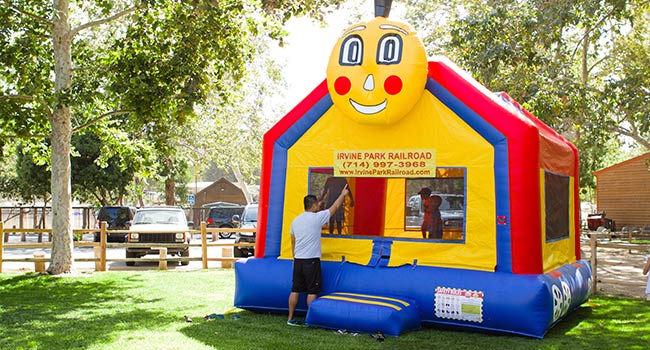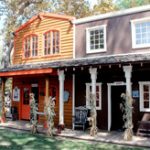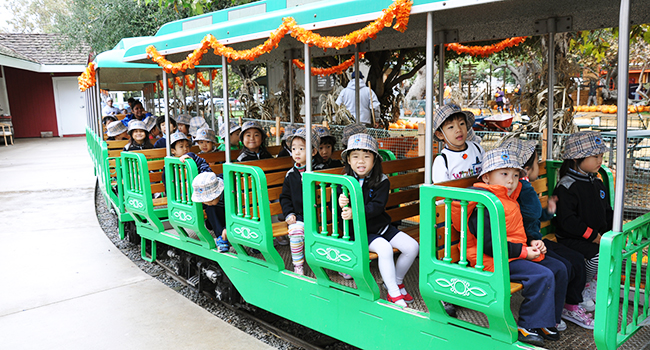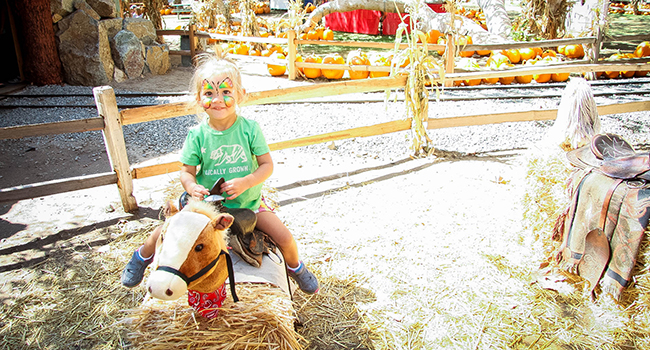Pumpkin Patch Tours
Irvine Park Railroad offers Pumpkin Patch school field trip for registered public or private school classes. You can choose a package that is best suited for your class. Pumpkin Patch tours are only reserved in advance with limited availability for registered public or private schools.
By scheduling your school ahead of time, you can have access to one of our Party Pavilions FREE for lunch and activities. The Party Pavilion can be used for 1/2 hour at the end of your tour.
Free Activities include a haunted house, picture stands, and a giant hay maze.
Package #1
$15.00 per child
Includes
Train Ride
Pumpkin
Bottle of Water
Package #2
$20.00 per child
Includes
Train Ride
Hay Ride
Pumpkin
Bottle of Water
Package #3
$25.00 per child
Includes
Train Ride
Panning for Gold
Pumpkin
Bottle of Water
Package #4
$30.00 per child
Includes
Train Ride
Panning for Gold
Hay Ride
Pumpkin
Bottle of Water
Parking
Bus parking is free
Weekday $3.00 per car
Schedule
September 30 – October 31, 2024
Reservations open May 20th, 2024 at 9:00 AM
Teachers & Adults
Teachers: FREE
Adults: $8.00 for train ride, $16.00 for train ride and hay ride
The final count of attendees is due 1 week prior to your reservation. Full payment is due upon checking in.
Groups
A minimum of 25 paid children per class is required to reserve a Pumpkin Patch tour.
Note: Coupons, discounts, and special offers are not valid with school tour pricing.

Add a Moon Bounce for
ONLY $75
Maximum of 50 children
The moon bounce will be set up in a Party Pavilion and will be available for 1/2 hour at the end of your tour.
We also offer Free Activities
for all Pumpkin Patch visitors

Haunted House
The spooky haunted house is not too spooky for even the youngest Pumpkin Patch visitors.

Picture Stands
Create lasting memories by taking photos in the festive, fall picture stands. Children and adults can pose together in a picture stand too!

Hay Maze
Both children and adults are sure to have fun navigating through the hay maze.
Helpful Tips and Reminders:
- Plan to arrive at least 15 minutes prior to your start time; a late arrival may result in a shorter tour time.
- The group tour will last approximately 1 1/4 to 1 3/4 hours, depending on the package purchased.
- We suggest children wear matching shirts and name tags to more easily identify the children in your group.
- Please have children wear comfortable clothes and closed-toe-shoes as they will be playing in the Pumpkin Patch.
- There is no drinking fountain inside of the pumpkin patch; each paying child will receive a bottle of water after they receive their pumpkin. The water bottles will be available in the shaded picnic area where your group can enjoy snacks, lunch, and games.
- There is a restroom conveniently located at the end of the parking lot. We require one of your chaperones to accompany all children to and from the restrooms.
- We suggest that you bring boxes or bags for children to more easily carry their pumpkins home.
- Irvine Park Railroad is centrally-located in Orange County. Los Angeles and Riverside areas are all a short drive away.
Payment is due in full upon your arrival at Irvine Park Railroad. We accept cash, a school check or credit card (MasterCard, Visa, American Express or Discover).
All prices and information are subject to change without notice.









